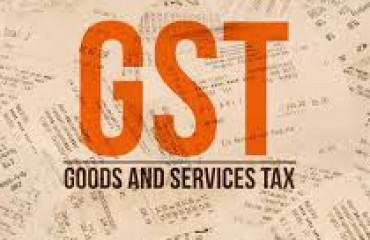
GOVERNMENT OF INDIA MINISTRY OF FINANCE DEPARTMENT OF REVENUE ***** LOK SABHA UNSTARRED QUESTION NO.3981 TO BE ANSWERED ON MONDAY THE 28TH MARCH, 2022 CHAITRA 7, 1944 (SAKA) TAX ON RAW MATERIALS OF SANITARY NAPKINS
GOVERNMENT OF INDIA MINISTRY OF FINANCE DEPARTMENT OF REVENUE ***** LOK SABHA UNSTARRED QUESTION NO.3981 TO BE ANSWERED ON MONDAY THE 28TH MARCH, 2022 CHAITRA 7, 1944 (SAKA) TAX ON RAW MATERIALS OF SANITARY NAPKINS
3981. SHRIMATI APARAJITA SARANGI: Will the Minister of FINANCE be pleased to state:
(a) whether the Government plans to review and remove any taxation currently levied on the raw materials required for production of sanitary napkins and if not, the reasons therefor;
(b) whether the Government has plans to remove taxation on other essential menstrual hygiene products such as tampons, menstrual cups, menstrual cloth, and like-products and if so, the reasons therefor;
(c) whether the Government plans to subsidise pan-India menstrual hygiene products and if so, the reasons therefor; and
(d) whether tax-exemption from GST has led to a reduction in the selling price of sanitary pads and tampons and if so, the details thereof?
ANSWER
MINISTER OF STATE IN THE MINISTRY OF FINANCE (SHRI PANKAJ CHAUDHARY)
(a) and (b): GST rates are fixed based on the recommendations of the GST Council. The GST rate for 'Sanitary towels (pads) or sanitary napkins; tampons' as prescribed by the GST Council is 'Nil' with effect from 26.07.2018. As regards raw materials required for production of sanitary napkin, at present there is no recommendation of the GST Council for reduction in GST rates on such raw materials.
(b) The Scheme for Promotion of Menstrual Hygiene among adolescent girls in the age group of 10-19 years is being implemented by the Ministry of Health & Family Welfare since 2011. Since 2015-16, the said scheme is being supported under the National Health Mission through the route of State Programme Implementation Plans (PIP), based on the proposals received from the States/UTs. Under this scheme the sanitary napkins are sold to the adolescent girls at a subsidized rate of Rs. 6 for a pack of 6 napkins within the community by the Accredited Social Health Activist (ASHA)
(c) Since GST is charged as per the specified rate on the value of the supply, any reduction in the rate of GST should generally result in a reduction in the final prices. However price of production also depends on other cost elements and factors; it may not be feasible to exactly assess the impact of GST reduction on prices.
